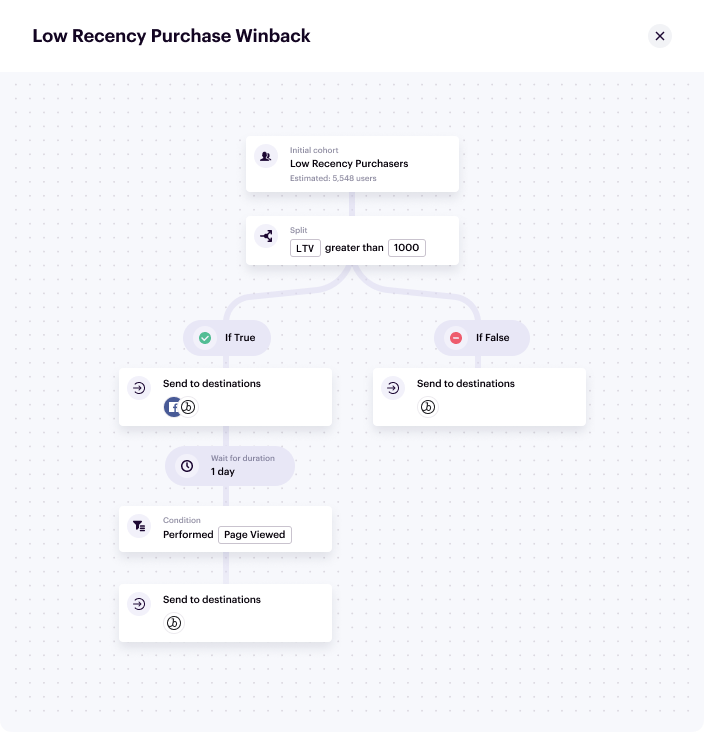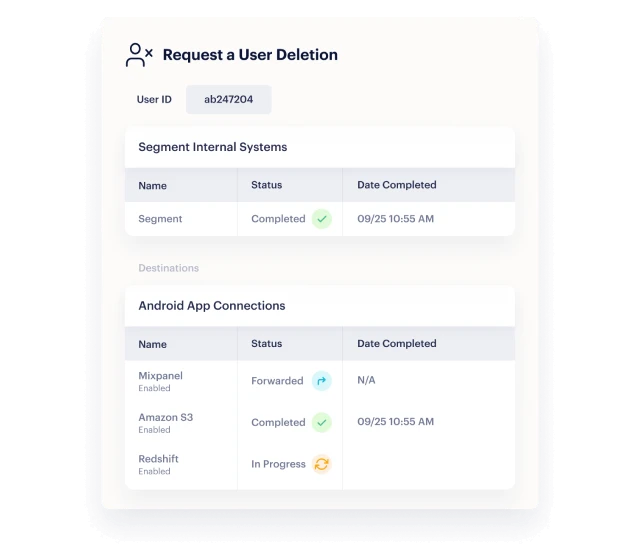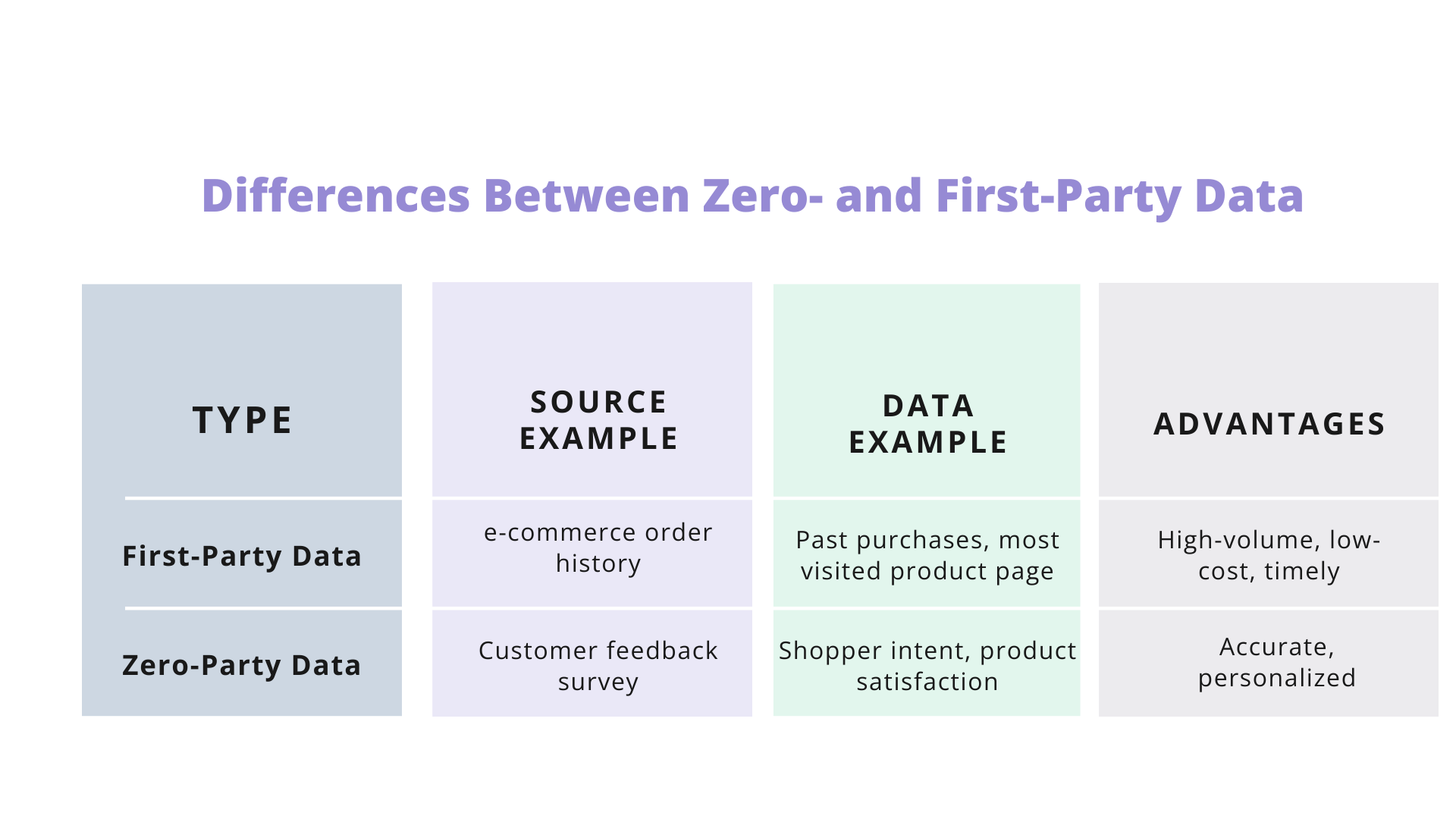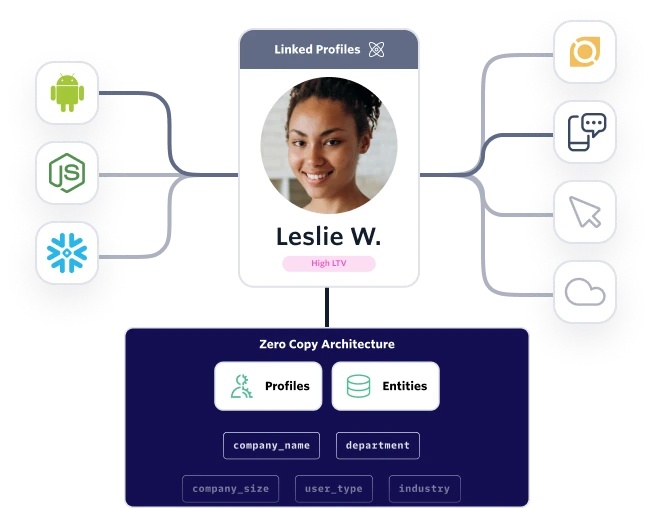What's The Difference Between First-Party vs. Zero Party Data?
Explore the nuances between first-party and zero-party data, their strategic value and use cases, and how Segment ensures ethical and effective data collection.
Explore the nuances between first-party and zero-party data, their strategic value and use cases, and how Segment ensures ethical and effective data collection.
Every business understands the importance of using data to drive insight, product roadmaps, better marketing campaigns – you name it. And this understanding of how vital data is goes both ways. Consumers have a strong interest in protecting how their data is collected and shared, and we’ve seen this play out in an increasing focus on data privacy laws and legislation.
To balance the need for consumer privacy, personalization, and business insights, it’s best that organizations have first- and zero-party data at the heart of their strategies.
Zero-party data refers to the data a person voluntarily shares with an organization, like by filling out a survey, completing a quiz, or creating an account (as a few examples).
Zero-party data walks an interesting line between qualitative and quantitative information. It can offer unquestionable and nuanced insight into how customers feel about your brand and products, along with different trends and topics they’re interested in.
This specialized data can be incredibly useful for building a rapport and creating even more nuanced campaigns. Use cases for zero-party data include:
Using customer-support chat threads to create a 1:1 customized home page layout
Creating relevant email campaigns based on answers from a previous email survey
Sending out SMS text promotions to audience segments created from the results of chat support polls
First-party data refers to the data an organization collects from a person through direct interactions (e.g., the products they viewed on the company website). What a shopper buys, the pages they visit, and the number of times they log in from a mobile app are all examples of first-party data.
Whether you want to create new ads for each customer segment or manage your product inventory more efficiently, first-party data can help carve the right path forward. For one, it is unique to your business – no other competitor will have access to these insights about your customers. Second, it’s compliant and future-proof – third-party cookies and shady purchases of user data are quickly being phased out of the advertising and marketing landscape. (Learn how the media company Quartz navigated the shift away from third-party cookies with an emphasis on using first-party data.)
One use case with first-party data includes constructing a win-back campaign. By understanding the frequency at which customers make a purchase, businesses can pinpoint when people’s engagement is starting to wane and proactively reach out with an incentive.

Both first- and zero-party data are the result of direct customer interactions. But first-party data is more implicit in the way it’s gathered. (Someone browsing a website understands that an organization will see the pages they view.) Zero-party data is more active on the customers’ end; they’re knowingly volunteering information about themselves, whether it’s an email, satisfaction score, etc.
First- and zero-party also stand apart from second- or third-party data when it comes to compliance and reliability (i.e., there’s no gray area in terms of how this data was collected). However, there are still data privacy considerations to keep in mind, which we outline below.
Businesses have a legal and moral obligation to protect customer data and privacy. While zero- and first-party data may be the result of direct customer interactions, organizations must have user consent. For instance, the GDPR stipulates that businesses have to have legal grounds to process and collect data from EU residents. And while the EU has been pivotal in driving forward a “rights-based” approach to privacy, other countries (like the U.S.) are quickly following suit (e.g., in Colorado, California, Virginia).
Having a Consent Manager tool can be instrumental in ensuring that organizations are adhering to people’s preferences when it comes to their data. With Segment’s open-source Consent Manager, organizations can actually handle user suppression and deletion requests at scale.

Other data privacy considerations to keep in mind:
Only collect the data you need, and be clear in your tracking plan as to why your company is collecting certain types of data.
If you collect personally identifiable information, ensure it’s protected with features like encryption, user-permission controls, data masking, etc.
Be up to date on the different data privacy laws and regulations you are beholden to (e.g., data residency laws).
When combined, first- and zero-party data often paint the most accurate picture of your customer.
Consider the example of a customer who purchases an accessory for their RV. This transaction history is first-party data and tells you that they (or someone they know) use an RV. Only after they answer your survey do you learn that they aren't an RV owner, but that they frequently rent one for the summer. Knowing this, you can start tailoring your campaigns to match their seasonal use of an RV.

Segment’s CDP empowers businesses to collect and consolidate both first- and zero-party to gain holistic customer profiles, highly granular audience segments, and have the ability to activate this data in any downstream tool. Segment’s Privacy Portal also helps organizations adhere to privacy laws and regulations at scale with an array of automated features.
Segment provides a scalable infrastructure to collect customer data from any source, and send it to any destination.
But how do you ensure that you’re collecting the right data, and sending it to the right destination? With Protocols, companies can automatically enforce their tracking plan to ensure there’s alignment over what data is being collected and for what purpose. On top of that, Protocols ensures that all data adheres to preassigned naming conventions to protect quality and accuracy. Any event that doesn’t match the tracking plan is automatically blocked and flagged for review, saving countless hours in trying to track down the root cause of data inconsistencies.
With Segment, organizations have access to over 450 pre-built integrations to customize their tech stack, and connect to new platforms and tools in a matter of minutes. With Functions, teams can also build custom sources and destinations to suit their needs.
With Segment Unify, businesses can also intelligently merge customer or account-level data into a holistic profile that’s updated in real time. These profiles can then be enriched with computed traits (e.g., calculating lifetime value), SQL traits (e.g., pulling data from the data warehouse), and even predict user behavior.


Our annual look at how attitudes, preferences, and experiences with personalization have evolved over the past year.
First-party data is the information collected about a consumer from direct interactions with your business (e.g., in-app behavior, pages viewed, products purchased). It differs from zero-party data, which is information explicitly provided by a person (e.g., through feedback forms, surveys, polls, account creation).
Zero-party data is based on information that’s been volunteered by the customer. It can offer more nuanced insight into their preferences and how they feel about an organization. While first-party data does reflect a person’s direct interactions with a brand, there is some room left for speculation (e.g., someone may have viewed a product by accident, not because they wanted to buy).
While first- and zero-party data are collected through direct customer interactions, third-party data is gained from partnerships with marketing companies, data aggregators, or advertising companies. Unlike first- and zero-party data, third-party data may or may not be accurate, and there are no assurances that it complies with data privacy regulations and best practices.
Segment takes the collection, protection, and use of data very seriously and has implemented measures to comply with data regulations such as GDPR and CCPA. Segment’s services are SOC 2 Type II and ISO 27001 compliant and allow users to opt out of future data collection. Entire customer data profiles can also be deleted to ensure all connected data is removed upon request.